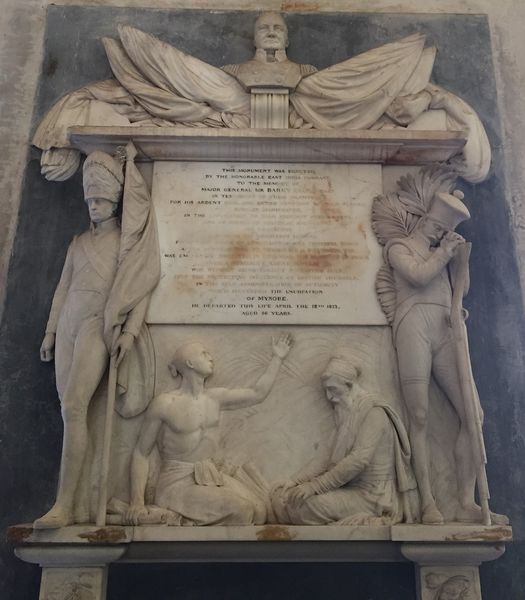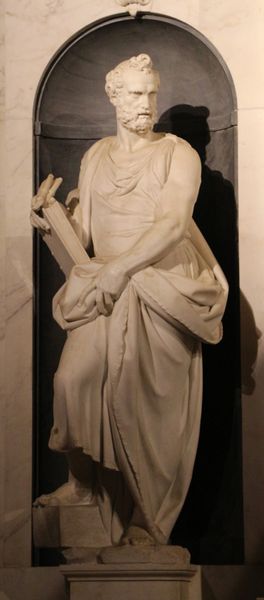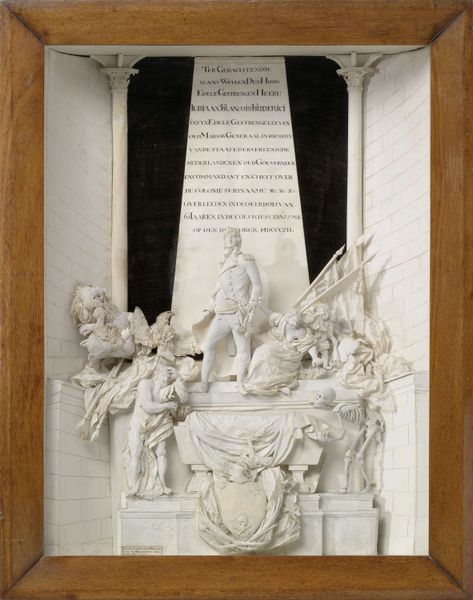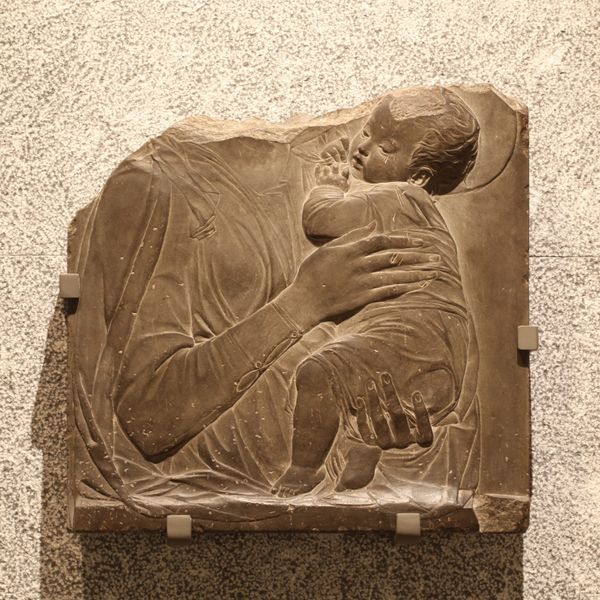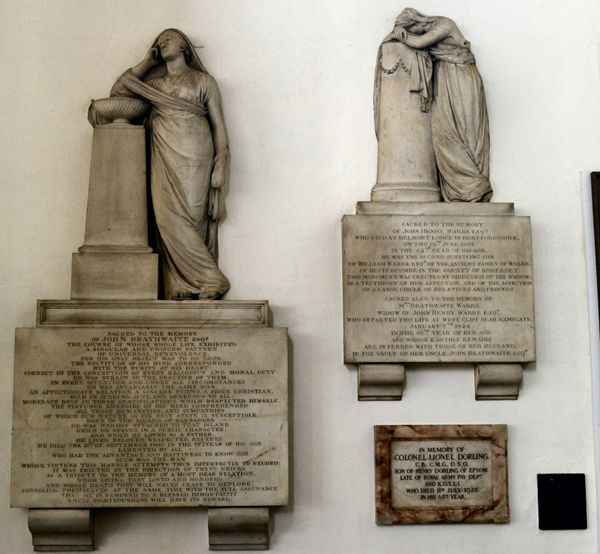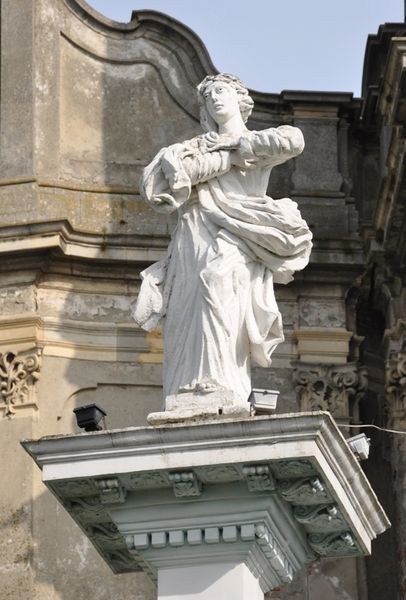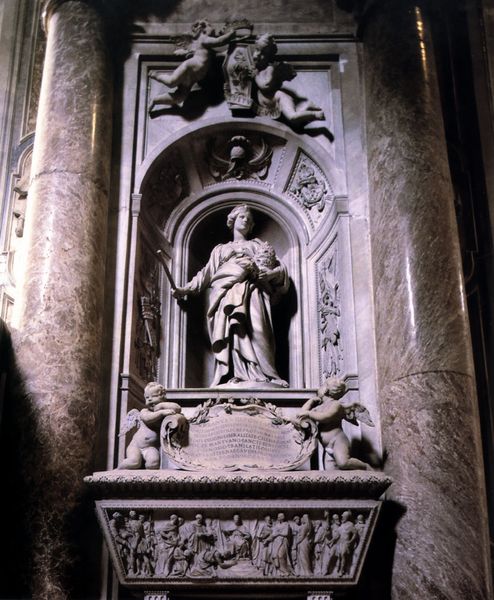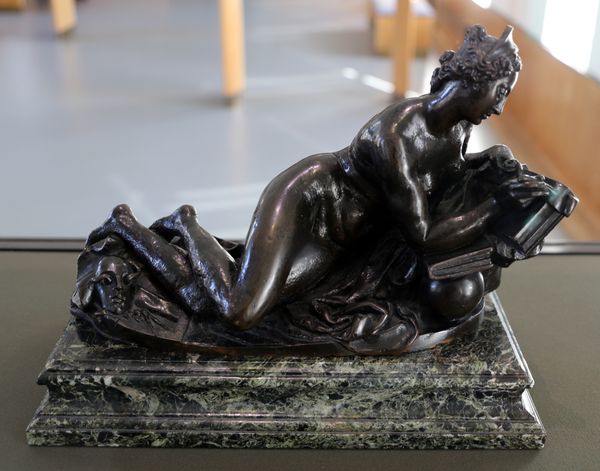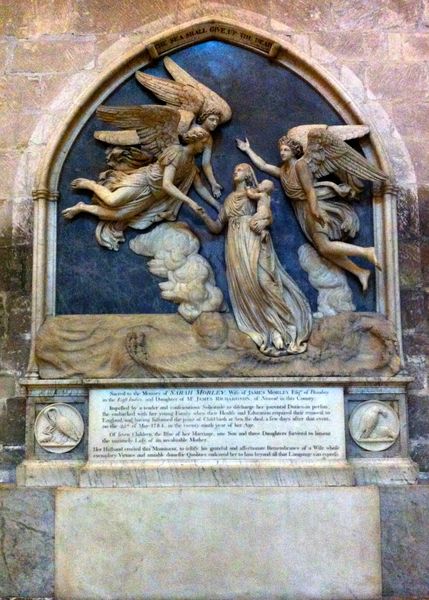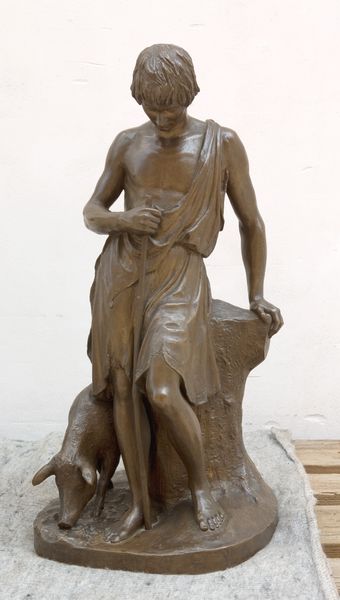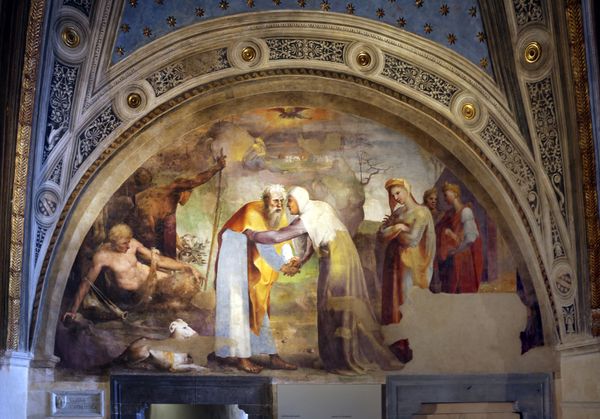
carving, relief, sculpture, marble, architecture
#
portrait
#
interior architecture
#
neoclacissism
#
wood texture
#
statue
#
medieval
#
carving
#
allegory
#
relief
#
classicism
#
sculpture
#
history-painting
#
marble
#
architecture
Copyright: Public domain
John Flaxman created this ‘Monument to William Miles’ using marble, a traditional material for sculpture and commemorative monuments. The cool, smooth surface of the marble lends itself to fine detail, which you can see especially in the woman’s draped clothing and the folds of the fabric. Marble is also associated with classical antiquity, a visual reference that Flaxman uses to evoke a sense of timelessness and solemnity. Carving marble is a labor-intensive process, requiring skill and patience to coax the desired forms from the stone. The woman's contemplative pose and the inclusion of the book symbolize knowledge and reflection, while other symbolic nautical elements refer to Miles's life. But this choice of material also had a social significance. Marble was an expensive material. The monument thus speaks not only to Miles’s life, but also to his family's wealth and status, which they were keen to advertise. By considering the materials, making, and context, we gain a deeper understanding of this artwork's meaning, challenging the separation of fine art and craft.
Comments
No comments
Be the first to comment and join the conversation on the ultimate creative platform.
